The Book of the Historic Holiday Resort
- Deal and Walmer
On this page we reproduce the full text of a visitors guide published in 1938 by the, then, local authority for Deal and Walmer. It provides a fascinating glimpse of the area immediately before the second World War. DealWeb is indebted to Debbe Kohler of New South Wales, Australia, who kindly sent us the original booklet which she had discovered in a charity shop in Wellington, New Zealand.
... they possess a charm of their own
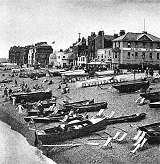 |
| Deal Beach |
|
|
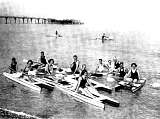 |
| Bathing floats |
|
|
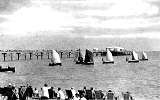 |
| Regatta start |
|
|
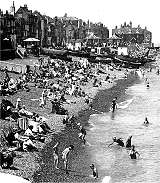 |
| Deal Beach |
|
|
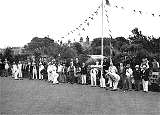 |
| Bowls |
|
|
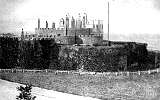 |
| Deal Castle |
|
|
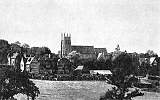 |
| The Glen |
|
|
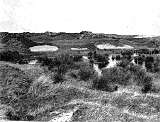 |
| Golf links: new 4th hole |
|
|
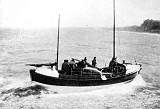 |
| The Lifeboat |
|
|
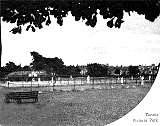 |
| Tennis in Victoria Park |
|
|
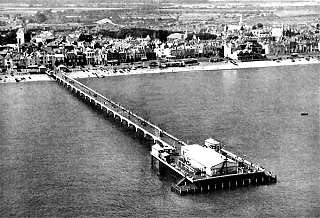 |
| Aerial view of The Pier |
|
|
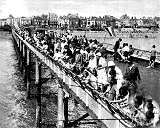 |
| Fishing from The Pier |
|
|
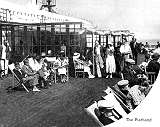 |
| The Pierhead |
|
|
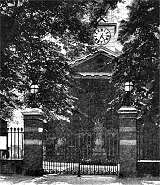 |
| St George's Church |
|
|
 |
| Deal Beach |
|
|
 |
| Bathing floats |
|
|
 |
| Regatta start |
|
|
 |
| Deal Beach |
|
|
 |
| Bowls |
|
|
 |
| Deal Castle |
|
|
 |
| The Glen |
|
|
 |
| Golf links: new 4th hole |
|
|
 |
| The Lifeboat |
|
|
 |
| Tennis in Victoria Park |
|
|
 |
| Aerial view of The Pier |
|
|
 |
| Fishing from The Pier |
|
|
 |
| The Pierhead |
|
|
 |
| St George's Church |
|
|
 |
| Deal Beach |
|
|
 |
| Deal Beach |
|
|
 |
| Tennis in Victoria Park |
|
|
 |
| Aerial view of The Pier |
Deal now embraces Walmer, and as a Holiday Resort possess their own natural beauties and characteristics. Singular, too, these two unspoiled gems of the South East coast offer, not Amusement Arcades Casinos, Menageries, Ballrooms, and the modern artificial entertainments, but just themselves - just Deal and Walmer ... and therein lies their charm.
Despite their "oneness" and the many things have in common, it can be said that Deal is immediately conscious of Walmer, and vice versa, for whilst Deal's development, due to its maritime interest, brought houses practically to the water's edge; at Walmer its growth was more distant from the sea, giving a sense of discreet association, rather than, as with Deal, an intimate connection and dependency.
Just two hours by road or rail separates London from this invigorating holiday resort with its friendly atmosphere. For Deal and Walmer are friendly in very happy and healthy surroundings.
Here the air is tonic wine itself, invigorating, but not heady; and where invariably a slight refreshing breeze carries all the elements of health. Such, then, is an ideal spot for all whose favourite pleasures are active ones, as well as for those whose intentions are to be downright lazy. And much credit can be taken for one as for the other, for to get the best from laziness there must be interest and activity all round.
Interest and activity exist in plenty, for always there is the sea in all its many and varying moods. For days it shows a mirror-like surface, depths of transparent blue, and then ... a breeze from the North Sea, magnificent rollers dash themselves to the beach in scintillating sun-drenched spray.
With such rich endowments from nature all must surely reap the benefit from even a short stay in Deal and Walmer. Permeated with ozone, it tones up the whole system, and with a high Sunshine record this salubrious resort offers perhaps more natural happiness than anywhere in England.
And not only in the summer; but in winter, for when other resorts report "stormy winds and rain" - Deal and Walmer enjoy many mild and sunny days.
Need it be added that with all these gifts from Nature Public Services have not been neglected. Water supply, electric light, gas and transport facilities are well planned, ready to serve - and second-to-none.
It is perhaps the past of Deal and Walmer which makes the present so beautiful. By some mystic force the old-world spirit of those hardy fisherfolk of yesterday permeates into the holiday atmosphere of to-day.
Somehow it seems but natural that the mighty Legions of Julius Caesar should have chosen this spot as a starting point in their conquest of Britain. It was in 55 B.C. that the first unwelcome invasion was made, to be followed, a year later, by a second, when here they set up their Naval Camp. Evidence of their stay can be seen in the Town Hall Museum, where is housed a small but valuable collection of pottery, coins, weapons, flint implements and bronze brooches, etc., which the surrounding earth has yielded.
As the pages of history are turned such characters are met as Hengist and Horsa, St. Augustine, Simon de Montfort, Queen Margaret, the Earl of Richmond, Perkin Warbeck, Barton the Buccaneer, Henry VIII, Ann of Cleves, Elizabeth, Prince Charlie, Nelson and the Iron Duke - names that spell English History.
An important date in Deal's own history is 1699, when William III granted its charter of incorporation.
Foreign fleets have sailed the Downs and threatened the countryside. The East and West India Fleets, too, found anchorage there.
During the Dutch Wars of the 17th Century, and the French Wars, Deal was of great naval significance. In 1863, however, its Stuart Naval Yard, severing its Admiralty connection, was abolished. The only remaining witness is the Time Ball Tower, now the Information Bureau.
Deal is mentioned in the Domesday Book, and as early as 1229 history attaches it to the Cinque Ports.
Upper Deal, with its 12th Century Parish Church of St. Leonard, is the oldest part of the town. Not until Elizabethan times was Lower Deal colonised. Prior to that it was just a shingle waste sparsely inhabited by fisherfolk. Spasmodic development brought narrow but picturesque streets, where small houses rubbed shoulders with graceful Flemish gables. Middle Street provides a fine example. Through these streets, smugglers and pressgangs stalked. Here, too, lived the hardy boatmen and pilots, seafarers of sterling quality, who by their skill and daring brought fame to Deal.
That tradition continues, for no part of the 5,000 miles of British coastline has a finer record of rescue from shipwreck than that part of Kent opposite that "graveyard of ships", the dreaded Goodwin Sands.
Walmer, Deal and Kingsdown lifeboat stations, established in 1856, 1865 and 1866 respectively, between them have been out to over 800 wrecks and have saved 1,357 lives. Of these Deal is proud to claim 861 rescues.
The Deal station was in existence for 67 years and had 5 lifeboats, the last - the famous "Charles Dibden" - served for 27 years and saved 395 lives. The Royal National Lifeboat Institution have awarded 18 medals for gallantry to the men of Deal - the first four in December 1824, before the establishment of a lifeboat station.
The name of Coxswain William Adams is one of the most distinguished in the long roll of Deal's famous life-boatmen. "Cox" for nearly 14 years, he took part in the rescue of 321 lives, saving 14 vessels. Three times he won the Institution's silver medal, was awarded a gold watch by the United States Government, silver medals by the Italian and Esthonian Governments, and received special thanks from Germany. He died in 1926 at the age of 75.
It was in 1932 the Deal Station was closed, as with the advent of a Motor Lifeboat a decision was made to revert to one Lifeboat Station situated at Walmer, owing to launching conditions being more satisfactory than at Deal. A record of 257 lives rescued has already been made.
The Walmer boat, also named the "Charles Dibden", is of the "Beach" type. 41ft. by 12ft.3ins., weighs 16¼ tons, has 135 air-cases, and is fitted with twin screws driven by two 35 H.P. engines, which will continue running even if the engine-room is flooded. With a speed of 7½ knots she carries a crew of ten, and in rough weather can take 85 people on board.
The local branch of the R.N.L.I. is known as the Goodwin Sands and Downs Branch, and its Honorary Secretary is Alderman Captain W. R. Coleman, Holly Cottage, Walmer.
And these are its Famous Castles.
The bravery and unquestioning service of their humble folk have won world renown for Deal and Walmer. Men of more exalted rank, famous, too, for their service, have sojourned at Deal and Walmer Castles.
These two castles, with Sandown Castle, were built by Henry VIII at a time when war, rumours of war and possible invasion prompted these defence measures.
The most picturesque is Walmer Castle, and it was here that the Duke of Wellington lived from 1829 till his death in September 1852. The Spartan-like simplicity of the life of this famous figure is reflected in his rooms at the castle, which are carefully preserved and contain numerous relics of historic interest.
As the official residence of the Lord Warden of the Cinque Ports the castle enjoys added interest. The Wardenship was accepted by His late Majesty King George V, as Prince of Wales, on the resignation of Lord Curzon. Other illustrious Wardens include Pitt, Palmerston, the Marquess of Salisbury, Earl Granville, Earl Brassey and the Marquess of Reading. The present Lord Warden is The Most Hon. The Marquess of Willingdon.
Periodically open to visitors, Walmer Castle is well worth a visit. Situated close to the sea and partially screened by trees, it is on the omnibus route to Kingsdown.
Deal Castle is also intimately connected with those who have given illustrious services to their Country and Empire, for the Earl of Ypres was its Captain in 1925, and passed away there in 1926. Lord French was succeeded by Lord Allenby, whose distinguished services in the East will long be remembered. On Lord Allenby's retirement the Marquess of Reading graced the Office and resided at the castle until his removal to Walmer. The present Captain is Field-Marshal Lord Birdwood of Anzac and Totnes.
Four miles of delightful promenades, with never more than a few yards from the sea - that is why the walk from the ruins of Sandown Castle to the climb that leads to the cliffs of Albion is so very popular.
Along the Marina Parade, past the Central Parade - that unique stretch with its quaint jumble of small and large houses which once was Deal's fishing quarter; on to the South Parade, the Pier, to Deal Castle and the cool, verdant Walmer Greens; now past Walmer Castle to pleasant little Kingsdown village, where begins the rise to cliffs which, but for an occasional break such as at St. Margaret's Bay and Dover, sweep on to Folkestone.
And the while, out at sea, an endless variety of craft such as few places can offer - stately liners, the pride of the Mercantile Marine, ships of all nations, barques with sails set, oil carriers, tramps, barges, trim craft of every kind, and sometimes elegant yachts; and not just a matter of a trail of smoke on the horizon, but endless shipping easily discernible with the naked eye.
Comes the night, and the lively interest of the sunlit hours gives way to sheer beauty, when, the moon over the water, the twinkling lights of ships at anchor or gliding through silvery sea, the shimmering coronet that is distant Ramsgate, the rhythm of the flashing light .buoys, the sweeping beams of the lightships at anchor (guarding the Goodwin Sands) and of the lighthouses on the North and South Forelands, and far away Calais and Cape Grisnez - could anything be more fascinating, enthralling or magnetic?
Yet, with morning again, there are new delights, for whilst the early sun is rising over the sea it is possible from the pier for your eyes to take in the view from Ramsgate and Pegwell Bay, right along the coast line, and behind which lies the most famous group of Championship Golf Courses in England, and thence on to the Sandown part of the town, with its fascinating variety of houses.
This charming irregularity is a legacy of the days when Deal was prominent in seafaring and naval history, times when Deal supplied merchandise and victuals to the hundreds of vessels anchored in the Downs, times when smuggling was rife.... Take all this in, then see the activity on the shore - deckchairs being dotted about in groups; and understanding pairs; shining motor boats being lowered to the sea, and early morning bathers darting to and from the sea and their hotels.
Then look farther south - to the left. There is Walmer Castle, the white cliffs of Kingsdown with its wooded slopes and camps, large and small - for there behold the happy hunting ground of the lovers of the simple life.
Visualise what this coastline holds for all who are admirers of England's grandeur.
The Sportsman can be particularly happy, as this brief outline of "What's on" in the way of sport will prove.
For those whose holiday is no holiday at all without racquet in hand, Deal offers, in Victoria Park, five superb green hard courts of modern type - no loose surfaces, yet porous, they are unaffected by rain - and therefore no irritating waits whilst courts are being "swept off". Ten really well-kept grass courts are also provided. There is, too, ample space for the children to romp and play, not to mention cricket pitches - "home" to the local clubs - but where visitors may play; practice nets and the ever popular putting green.
In Walmer, at the Marke Wood Recreation Ground, three excellent hard courts similar to those in Deal are provided, in addition to a putting green and excellent hockey, cricket and football pitches.
"Deal" and "Golf" are almost synonymous terms, for here, within a radius of six miles, there are no fewer than three championship courses - the Royal Cinque Ports, Deal; Royal St. George's and Princes, Sandwich, to which must be added two other fine courses at Kingsdown and St. Margaret's Bay.
Visitors may play on these Championship Courses on introduction.
The Royal Cinque Ports Golf Club is and has been The Headquarters of many important meetings - one of principal annual events being the Competition between teams from the Public Schools for the "Halford Hewitt" Cup. 1934 saw the preliminary rounds for the Hewitt Open Championship; in 1936 the English Championship was played on these links, and in July, 1938, the British Open Championship will take place here.
The beautifully kept fairways and matchless greens, whilst demanding the best that a golfer can give, will also raise the "rabbit" to exultation. The Walmer and Kingsdown course, laid out on the springy downs, and the St. Margaret's, some miles farther on, both deservedly popular, searching demands on one's abilities. Yet who would avoid the issue, when at every tee a different view, when the sheer beauty of it all erases all thought of handicap.
Whether the "compleat angler" itching to get amongst the "big fellows", or an "annual holiday" fisherman, few holiday resorts can boast of such profitable fishing grounds.
This can be proved any day on the lower deck of the Pier, where whiting, pouting, dogfish, dabs, small codling, and, of course, horse mackerel and pollack are regularly landed.
Beach picnic fishing parties also make a great appeal, for many have experienced the thrill of a rod bent to a fighting bass.
But perhaps for the keen angler the biggest thrill of all is to accompany any of the Deal boatmen in their up-to-date motor and sailing boats for a real sporting day out to their own "secret spots".
The deep waters around the wrecks and the Goodwin Sands will yield large conger or tope, skate or cod. Because of the prolific catches which this stretch provides Deal has become the rendezvous of many deep sea angling competitions. The two local Fishing clubs always extend a welcome to visitors. Both arrange, in addition to their Autumn Festivals, open competitions throughout the year for resident and visitor alike. All interested can obtain further information from the Pier or Information Bureau.
Needless to say, bathing is one of the chief joys here. Unrestricted freedom admits of a plunge in anywhere - any time. Equipped with mackintosh and good taste, propriety always prevails.
For the children no finer bathing can be found than from the Coastguard Station to Sandown Castle and beyond. Here the receding tide leaves a wonderful playground of hard, wet sand for the youthful architect - and when building castles bores, there are harmless rollers to dive through - just endless fun.
At the Bathing station opposite the Information Bureau, private tents, costumes, towels, fresh-water showers are available, not forgetting the services of ever watchful attendants.
Sun bathing is permitted, and under hygienic conditions which the tide-washed shingle provides.
The Bowler, too, is catered for in the Park, where there is a first-class six rinked Cumberland turf green. The Blenheim Bowling Club plays regularly on this green - likewise there is a welcome to all.
The facilities for riding and for the hiker in this, the Garden of England, assist in completing this wonderful portfolio of sport and health-giving recreation.
Many of the small villages lying to the West the Deal-Sandwich Road can be reached by arrow lane and footpath, through field and copse, farmyard and meadow. With an objective in mind strike out westwards, scorning the roads as much as possible, and rely on a good sense of direction. In Spring, Summer, Autumn or Winter the comely beauty of the countryside is delightful. Each village has some outstanding feature of its own, and in seeking these the pleasant landscapes and rural serenity cannot fail to captivate.
Even the most modest walker can enjoy these jaunts without any excessive demands of strength. There are no fatiguing hills; the countryside on the whole is gently undulating, and every turn reveals much unsuspected beauty. Kent is the Garden of England and it is at its choicest near its Gateway.
Here are some suggestions for Rambles that are different.
RIPPLE
A tiny village two and half miles west of Walmer and just the Deal-Dover main road, Ripple stands in cool, wooded surroundings. Its chief interest, apart from its acknowledged picturesqueness, is that here was born on the 28th September, 1852, the Earl of Ypres, who, as Sir John French, commanded the gallant little army of "Contemptibles" in the early days of the Great War; and in the lovely Churchyard, overhung with shady, gnarled old trees, he was laid to rest when he passed away at Deal Castle in May, 1925.
ST. MARGARET'S BAY
St. Margaret's Bay itself is a bewitching little village nestling between the beetling brows of the weathered chalk cliffs. It is exquisite in its setting and a handsome reward for the time spent reaching it.
Walk still farther over the cliffs past the South-Foreland lighthouse, which is open to visitors at stated times, towards Dover. Here will be found a most magnificent view of Dover Harbour - a bird's-eye view of a scene of marine activity and, incidentally, a glorious spot for picnics.
Besides these Cliff walks there are many others which are rich in interest and scenic beauty. As a contrast take the walk to Sandwich Bay along the hard wet sands at low tide, and continue on to where the River Stour reaches the sea.
SANDWICH
Alternatively turn inland from the Bay and wander into Sandwich, steeped in antiquity and little spoiled by the passing of years. Wander by the old Tudor and possibly earlier period houses and step back into the past - into the days when Sandwich was a great Cinque Port.... No one having any interest in architecture and town planning should fail to visit Sandwich.
KINGSDOWN
As previously stated, this most delightful fishing and holiday village is approached by a continuance of the promenade under the shadow of ancient sea cliffs. The village is quaint in the fullest meaning of the word. The shore, with its capstan grounds and boats, the cottages and neat little bungalows under and upon the the downs and wood beyond, all spell charm. Incidentally, prawning at Kingsdown is good hunting.
RINGWOULD
A walk of a mile and a half from Kingsdown brings one to Ringwould, a village typical of Kent. Situated on high ground it enjoys a pleasing prospect of the Downs and shipping.
GREAT MONGEHAM
A tramp inland brings one to Great Mongeham, now part of the Borough of Deal, where the quaint old wrought-iron inn sign outside the "Three Horseshoes" is worthy of note. The imposing village Church dates from the early 13th Century. Built boldly on the brow a hill it keeps a watchful eye on the surrounding countryside.
NORTHBOURNE
Northbourne is a worthy objective for any nomad. The village itself is interesting, and no one should fail to peep into its fine Church, if only to see the notable monument in the South Transept to Sir Edwin Sandys (died 1639) and his wife, whose recumbent effigies are upon it. The Church itself is mainly transitional work of the late 12th Century. The Manor was originally owned by the Monks of St. Augustine, who probably had a good deal to do with its erection. Northbourne Park, forming part of the Estate of Lord Northbourne, is entrancing. Northbourne Court, an 18th Century house, stands close to the site of that of Sir Edwin Sandys and the Grange of St. Augustines.
BETTESHANGER
A pretty spot lying a mile or so west of Northbourne, is reached by a walk through the lovely Park. Betteshanger House, an Elizabethan style residence surrounded by enchanting gardens and imposing trees, the seat of Lord Northbourne, is now used as a Private Preparatory School. The gardens are open to the public on Thursdays.
RICHBOROUGH
One and a half miles from Sandwich is this remarkable relic of the Roman occupation. Here, where once was one of their strongholds, now remain ruined walls of astounding thickness and rising to a height of 25 feet. There is a weird subterranean way which can be visited. Excavations are ever in hand and many ancient objects are still being found in the shape of coins, ornaments, weapons, pottery and articles of bronze. The Museum is unique of its kind.
Below Richborough you can see what was once the Mystery Port of Richborough (or Stonar) during the War.
EASTRY
A large village on the Roman Road once a Capital of Kings of Kent, with a dignified Church of great architectural interest.
WALDERSHARE PARK
The seat of the Earl of Guilford.
HAM
A picturesque hamlet of one farmhouse and a Church.
BARFRESTON
The minute 12th Century Church here is a gem of late Norman work. The carving of the south doorway, the string courses and the wheel window in the east wall are alone worth a pilgrimage.
Other interesting excursions can be made to the villages of Tilmanstone, Chillenden, Knowlton, Worth and Woodnesborough. Farther afield are Denton, Ickham, Wickhambreaux, Fordwych and other characteristic Kentish villages with outstanding features, and many quite off the beaten track and unspoiled. All are connected by bus.
AMUSEMENTS
The Deal Promenade Pier Concert Hall. Here the Municipal Corporation provides high-class Concert Party, Orchestral and Vocal Concerts. The programmes are varied to suit all tastes and there are many popular weekly features, including Community Singing.
A Popular Dance is held weekly.
The Corporation provides music and entertainment morning, afternoon and evening.
Cinemas. There are four excellent Cinemas showing up-to-date Talking Pictures, the programmes changing twice weekly. Frequently films are shewn here before they are generally released.
Dancing. Local Sports and Social Clubs regularly organise dances in the Winter Gardens Theatre and a number of the Hotels and Cafes hold Dances for their patrons.
There is a weekly dance in the Pier Concert Hall.
Restaurants, Cafes. Visitors are amply catered for in. this respect. The Restaurants and Cafes are well appointed, and there is a wide choice to suit all tastes and pockets, including a new fully licensed Buffet at the Pier Head.
ACCOMMODATION
Hotels, Boarding and Apartment Houses. The accommodation is of a high order; the one desire is to serve and satisfy visitors, not to manage them.
So far as the Borough is concerned, the seaside Landlady of tradition is a myth. Visitors are treated as guests and every effort is made to cater for their every requirement.
A word as to the boarding houses: whilst recognising it may be good fun to some, it might remove a doubt if it is said that in Deal guests are not harried by well-meaning hosts into charabancs and made to tear round the country in paper hats advertising the house! You will be assured of a companionable time withal.
SPORTS
Golf, Tennis, Cricket, Bowls, Putting, Bathing, Boating, etc. - all have their mention on pages 15 to 22.
RIDING
Around Deal is good country for riding, which amongst visitors is becoming increasingly popular.
From stables just outside the town good mounts may be hired, and for beginners there are excellent instructors available. A favourite gallop is on the Downs above Kingsdown Cliffs.
DEAL, WALMER AND KINGSDOWN ROYAL REGATTA
The Royal Regatta is always held on the first consecutive Wednesday and Thursday in September. For two days the town is en fete. There is exciting racing on land and sea, and friendly rivalry between Deal and neighbouring towns for rowing honours, raising enthusiasm to the University Boat Race pitch. A huge fair comes into the Town for two days; there are fireworks, dancing, amusements, fun. Deal Regatta, under the patronage of the Lord Warden of the Cinque Ports and many other distinguished local citizens, has become known as the finest and best conducted event of its kind on the South Coast.
RAILWAY FACILITIES
There are fast trains to Deal from London (Charing Cross, Victoria, Waterloo, London Bridge and Cannon Street). There are also through trains from the Midlands and the North.
Penny-a-Mile "Monthly Return" Tickets are issued and are available any day, any train, forward or return within one month of date of issue. Return Fares from London - First Class 22/6, Third Class 15/-. Day Return - First Class 16/6, Third Class 11/-.
For the convenience of visitors who wish to explore the surrounding points of interest, a Seven Day Holiday Season Ticket is issued at Deal during the summer months, allowing the passenger unlimited travel within a given area for a period of one week. First Class 15/6, Third Class 11/-.